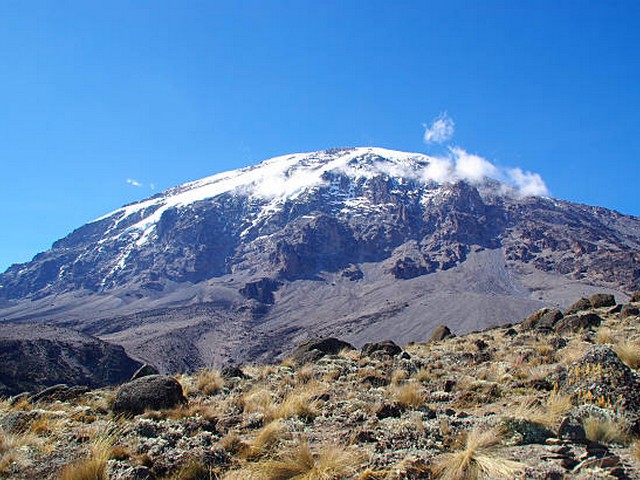Night Photography On Kilimanjaro: Shooting The Stars
Discover The Magic Of The Night Sky From Africa's Highest Peak
Imagine standing atop the majestic Mount Kilimanjaro, Africa's tallest mountain, enveloped in the serene silence of the night. Above you, the sky is a canvas of stars, each one sparkling in sharp relief against the pitch-black expanse. There's no doubt that Mount Kilimanjaro offers one of the most breathtaking backdrops for night photography enthusiasts. Whether you're a seasoned photographer or an amateur looking to capture the beauty of the cosmos, Kilimanjaro provides a unique setting to shoot the stars.
Join us at the Kilimanjaro Centre for Trekking and Ecotourism (KCTE), as we guide you through the exhilarating experience of night photography on Kilimanjaro. This post will delve into why Kilimanjaro is a premier destination for photographers, provide tips on capturing the perfect night-time shot, and inspire you to embark on your own starry adventure.
Why Choose Kilimanjaro For Your Astrophotography?
Unparalleled Clarity
At over 5,895 meters (19,341 feet), the summit of Kilimanjaro rises above much of the Earth's atmosphere, providing clearer and more vivid night skies. The thin air at this altitude means fewer particles to scatter light, allowing for crisper images of celestial bodies.
Minimal Light Pollution
Kilimanjaro's remote location, away from major cities, ensures minimal light pollution. This natural darkness is perfect for highlighting the intense luminosity of the stars and the Milky Way.
Diverse Landscapes
The varying ecosystems on Kilimanjaro—from rainforest to alpine desert—offer a range of foregrounds for dynamic compositions. Whether it's silhouetted trees or stark, snowy peaks, these landscapes add an extraordinary depth to any astronomical photography.
Essential Tips For Night Photography On Kilimanjaro
Gear Up Right
- Camera: A DSLR or a mirrorless camera with manual mode capability is essential.
- Lenses: Fast wide-angle lenses, ideally with a maximum aperture of f/2.8 or wider, are perfect for astrophotography.
- Tripod: A sturdy tripod is crucial for stability during long exposures.
- Remote Shutter Release: To avoid camera shake, use a remote shutter release or your camera's built-in timer.
Master The Settings
- Focus: Manually set your focus to infinity to keep the stars sharp.
- Aperture: Open up the aperture to let in as much light as possible.
- ISO: Start with an ISO setting around 1600 and adjust as needed based on the brightness of the sky.
- Exposure Time: Begin with 20 seconds. Longer exposures may cause star trails due to the Earth's rotation.
Plan Your Shot
- Timing: The best time for night photography on Kilimanjaro is during the new moon phase when the sky is darkest.
- Location: Consider shooting from Shira Plateau or Barafu Camp for optimal views.
- Composition: Use foreground elements to add interest and scale to your celestial photos.
Keep Warm
Temperatures can drop significantly at night. Dress in layers, and don't forget your gloves and hat to stay comfortable while you set up and wait for the perfect shot.
Join A Guided Tour
At KCTE, we offer specialized guided tours for photographers aiming to capture the night sky. Our expert guides not only help with the best spots and times for capturing the Milky Way but also ensure your safety and comfort throughout the trek.
Protecting The Sky: Responsible Photography
While enjoying the splendor of Kilimanjaro's night skies, it's crucial to practice responsible photography. This means respecting wildlife and the environment, minimizing light use, and leaving no trace.
Summing Up The Starlit Spectacle
Night photography on Kilimanjaro is not just about capturing stunning images but also about experiencing the profound tranquility and awe of the night at one of the world's most iconic peaks. It's an adventure that challenges your skills and rewards you with unforgettable views.
If you're ready to embark on this remarkable journey, book your Kilimanjaro climb with us at Kilimanjaro Centre for Trekking and Ecotourism (KCTE). We promise not just a trek, but an expedition that will enrich your life and your portfolio.
Frequently Asked Questions
What is the best time of year for night photography on Kilimanjaro?
The best time for night photography on Kilimanjaro is during the dry seasons, from late June to October and from late December to early March.
Do I need special permits for photography on Kilimanjaro?
While no special permits are required for personal photography, all visitors must be accompanied by a licensed guide, which we provide as part of our tour packages.
How physically prepared should I be for a night photography trip on Kilimanjaro?
Climbing Kilimanjaro is physically demanding. It's essential to be in good physical condition. Engage in regular cardio and altitude training if possible before your trip.
Can I rent photography equipment from KCTE?
Currently, we do not offer photography equipment rentals. We recommend bringing your own equipment and ensuring it is suitable for cold and rugged conditions.
Capture the cosmos from the roof of Africa. Book your adventure today with Kilimanjaro Centre for Trekking and Ecotourism (KCTE) and take home more than just photos – take home an experience of a lifetime.




